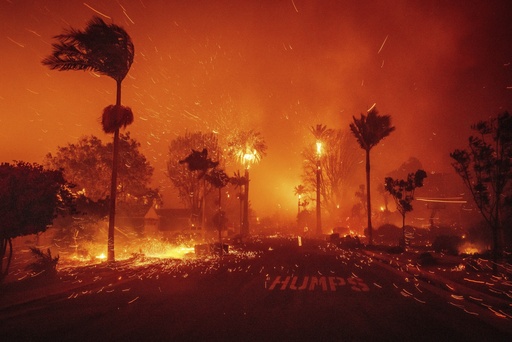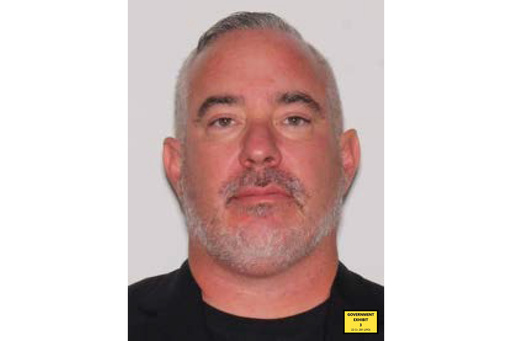PORTLAND, Oregon — The current administration is putting a hold on funding for wildfire mitigation projects that are financed through legislation previously supported by former President Biden. This delay poses a serious threat to efforts aimed at preventing devastating wildfires, much like those that recently occurred in Southern California.
This move contradicts President Trump’s assertions that communities must clear away flammable materials, such as downed branches and underbrush, to protect against wildfires. He emphasized the importance of this preventive measure during his recent visit to Los Angeles, labeling it as essential forest management.
According to Elizabeth Peace, a spokesperson for the Interior Department, the funding for these mitigation projects is “currently undergoing review to ensure consistency” with Trump’s executive orders.
It’s important to note that this scrutiny is specifically focused on the projects made possible by the Bipartisan Infrastructure Law and the Inflation Reduction Act, two key initiatives from Biden’s administration that allocated roughly $3 billion for wildfire mitigation efforts, often referred to as hazardous fuels reduction programs. Peace confirmed that projects funded through other congressional appropriations are not impacted and can continue their operations.
In Oregon, the Lomakatsi Restoration Project—a nonprofit organization engaged in forest management—has halted activities that rely on funding from Biden’s legislation, which comprises 65% of its $17 million budget. The executive director, Marko Bey, reported having to lay off 15 full-time staff members due to federal officials notifying him of the funding freeze with no clear timeline for its resolution. Bey described the situation as “really challenging,” stating that it does not make logistical sense to continue operations without assurance of payment.
Wildfire mitigation work typically involves the removal of small, dead trees through controlled burns or logging equipment, effectively preventing forests from becoming potential tinderboxes. These efforts usually take place during winter and spring to prepare for the fire season, which traditionally spans from May to November. However, blazes can occur year-round, worsened by rising temperatures and drier conditions driven by climate change.
The most recent display of the wildfire threat hit the Los Angeles area last month, resulting in the deaths of at least 29 individuals and the destruction of nearly 17,000 structures, making it one of the most expensive natural disasters in U.S. history.
Trump has long emphasized the importance of forest management, beginning in his initial term after witnessing the devastation of the Camp Fire in 2018, which claimed 85 lives. He has stressed the need to maintain the “floors” of the forest, noting how in places like Finland, they put effort into clearing the forest floors.
He issued an executive order aimed at bolstering federal land management, expressing frustration with California officials for their failure to manage forest upkeep, asserting that years of debris have rendered the areas prone to fire. In his remarks, he hinted that financial repercussions might be necessary for those not adhering to needed cleanup.
Democratic lawmakers are urging a reinstatement of federal funding, arguing that the suspension of payments is unlawful and poses a risk to rural economies while hindering crucial wildfire mitigation work. Sens. Martin Heinrich, Patty Murray, Jeff Merkley, and Amy Klobuchar voiced these concerns in a letter to the administration.
Harrison Fields, a deputy press secretary at the White House, defended the administration’s assessment, asserting that oversight of the funding is just as crucial as the restoration of California. Fields also acknowledged Trump as a significant proponent of initiatives to restore the state’s natural landscapes, stating that the president has consistently pressured local and state governments to lower barriers to restoration.
The ongoing review triggered by Trump’s orders is also affecting a $1 billion grant program dedicated to helping local authorities prepare for wildfires through community risk assessments and outreach initiatives. Kimiko Barrett from Headwaters Economics revealed that grant recipients were informed that funding would be paused for at least ten days, raising concerns about the capabilities of communities to conduct necessary risk reduction measures.
Amidst this situation, there are worries regarding the impact of Trump’s recent executive order on the staffing of federal positions, particularly for seasonal wildland firefighters. Despite claims from the Office of Personnel Management that these firefighters are exempt due to their public safety roles, confusion persists about the status of emergency hiring.
Ben McLane, a fire crew captain in Washington state, expressed frustration over stalled hiring processes due to uncertainty about the exemptions. While his selected team has completed much of the required pre-hire documentation, the overall process remains incomplete as human resources awaits confirmation to proceed.
He voiced concerns about public safety, highlighting the potential risks if hiring is not expedited: “There will be situations where people call 911, and there aren’t enough firefighters to respond.”
The Bipartisan Infrastructure Law had aimed to increase the federal firefighter workforce slightly in 2022, but ongoing issues remain with staffing and retention. Democratic senators indicated that there has been a staggering attrition rate of 45% among U.S. Forest Service firefighters over the last four years, advocating for a focus on recruitment instead of introducing more uncertainty through a hiring freeze.






